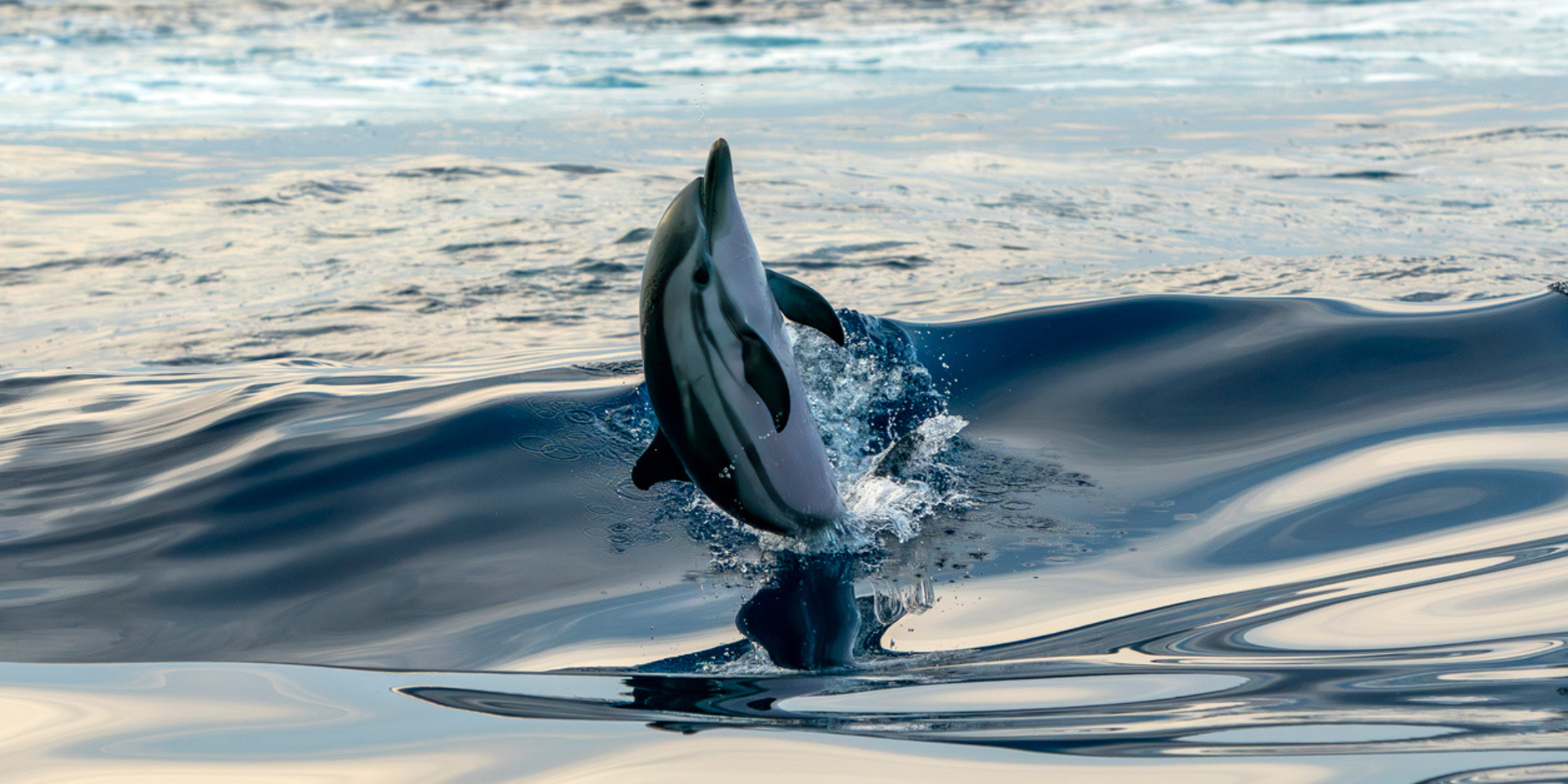One of the most widespread dolphins in the world, striped dolphins are acrobatic and usually found in tight, cohesive groups.
You’ll find this species most often in deep tropical to warm temperate oceanic waters, so no wonder that they are classified as oceanic dolphins.
Striped dolphins (Stenella coeruleoalba) are well known for their striking colour patterns, which includes bold, thin stripes extending from the eye to the short tapered pectoral fin. They also have another set of stripes down the side of their body.
Their rostrum, tail, pectoral fin and back are usually dark blue or gray and the underside of the body is much lighter in colour (white or pink). Their eyes are normally outlined by dark colouration.
They’re a similar shape and size to common dolphins (measuring up to 2.6 metres in length) and they have a long beak and a tall curved dorsal fin.
Striped dolphins are built to move fast and they are incredibly acrobatic, meaning they can often be spotted at the sea surface or bow-riding off boats. They can reach speeds of up to 37 kilometres an hour.
The species also displays a unique behaviour called roto-tailing, where they leap high out of the water and magnificently rotate their tails while airborne.
Very sociable and curious, this species travels in large groups. Pods usually number between 25 and 100 though they are sometimes seen in groups of several hundred animals. Scientists have observed that striped dolphins rarely associate with other species of dolphins and whales.
Where do Striped dolphins live?
Striped dolphins prefer warm waters that are deep and oceanic – this means they’re most often found in waters between latitudes 50° North and 40° South. They live in the Pacific, Indian and Atlantic Oceans and adjacent seas, including the Mediterranean Sea (where they are one of the most commonly encountered dolphins).

What do they eat?
Striped dolphins’ diets vary depending on their habitat. Off the coasts of Japan, South African and in the northeast Atlantic, they usually feed on lantern fish. To reach this prey, the dolphins have to dive down to depths between 200 and 700 metres.
In coastal areas of the northeast Atlantic, the species feeds on cod and anchovy. And in the Mediterranean, their favourite food is squid. Striped dolphins are also known to feed on octopus, krill and crustaceans.
Threats to Striped dolphins
Entanglement
One of the main threats to striped dolphins is, unsurprisingly, entanglement in fishing gear. This can go on to cause injury, fatigue, comprised feeding and sometimes even death.
Vessel strikes
Striped dolphins are at risk of vessel strikes throughout their range but the threat is higher in areas with busy ship traffic.
Environmental change and pollution
Climate change and pollution are a threat to all whales and dolphins because of the loss of habitat as waters become warmer.
Plastics and micro plastics, along with chemical pollutants, entering into the water system are a serious threat to all creatures in our ocean.
Striped dolphins, like other cetaceans, use noise to communicate and to locate prey. Increased noise pollution from vessels and other human activity interferes with this ability.
Hunting
The species is the targeted for its meat in several countries around the world, including Sri Lanka, some Caribbean countries and Japan (including in the infamous Taji dolphin drive hunt).
Natural predators
As with other dolphin species, striped dolphins are sometimes the prey of orca and large sharks.
